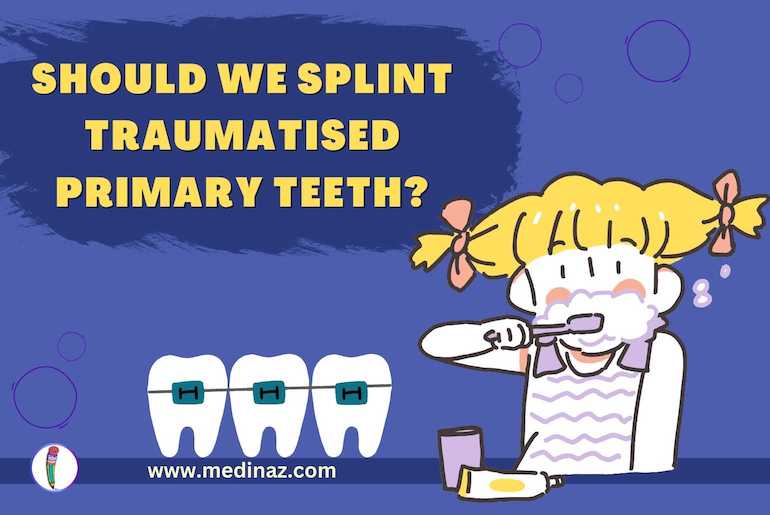Should We Splint Traumatised Primary Teeth? A Systematic Review:
In pediatric dentistry, the management of traumatised primary teeth is a critical concern. Trauma to primary teeth can result from various injuries, such as luxation, root fracture, or alveolar fracture. One potential treatment approach is splinting, but does it improve clinical outcomes? This blog examines a systematic review conducted by Dos Santos Fernandez et al. in 2023, which explored the effectiveness of splinting traumatised primary teeth
Summary of the Systematic Review
- The review aimed to assess the impact of splinting on traumatised primary teeth based on clinical studies published after 2003.
- Included studies reported trauma to primary teeth with a minimum follow-up of 6 months. Case reports were excluded, while case series were included. Avulsion injuries were excluded from the review.
- Three retrospective studies met the inclusion criteria, and only one of them had a control group.
- High success rates were reported for managing teeth with root fractures, indicating potential benefits for splinting in these cases.
- However, no significant benefit for splinting was found for teeth with lateral luxation. No alveolar fractures were included in the studies.
Commentary on the Systematic Review
The systematic review followed rigorous standards, including the Preferred Reporting Items for Systematic Reviews and Meta-Analyses (PRISMA) statement checklist. The authors conducted thorough literature searches across multiple electronic databases and manually assessed reference lists of relevant studies. While the review included three non-randomised retrospective studies, it acknowledged the limitations of low evidence strength due to the lack of randomised trials.
The studies included in the review scored “fair quality” on the Newcastle-Ottawa Scale, and the number of teeth studied for each type of injury was relatively small, potentially affecting the generalizability of the findings.
Evidence for Splinting Traumatised Primary Teeth
- Root Fractures: The review suggests that splinting traumatised primary teeth with intra-alveolar root fractures may lead to better outcomes. Two studies indicated that splinted teeth were 4.67 times more likely to be retained successfully than non-splinted teeth. However, the sample size for these studies was relatively small, emphasizing the need for further research.
- Lateral Luxation: For luxated teeth, whether splinted or not, the prognosis is generally poor, with less than 40% being retained for the length of follow-up in the reviewed studies. Hence, the benefit of splinting for laterally luxated teeth was not strongly identified.
Practice Points
Based on the evidence from the systematic review, here are some key practice points for managing traumatised primary teeth:
- Intra-Alveolar Root Fractures: Splinting of primary teeth with intra-alveolar root fractures may lead to better outcomes and is worth considering as a treatment option.
- Lateral Luxation: The effectiveness of splinting for the management of laterally luxated teeth remains uncertain. Consider patient comfort and individual circumstances when deciding on splinting in these cases.
Conclusion
While the systematic review by Dos Santos Fernandez et al. indicates potential benefits of splinting for traumatised primary teeth with intra-alveolar root fractures, the evidence base is still relatively limited. Further randomized controlled trials with larger sample sizes are necessary to strengthen the evidence and provide more definitive conclusions on the effectiveness of splinting in various traumatised primary teeth scenarios. In the meantime, dental professionals should carefully assess each case and consider the available evidence to make informed treatment decisions for their young patients’ oral health and well-being.
Reference: https://www.nature.com/articles/s41432-023-00914-3
Check more Dental Notes
A Visual Learning Platform

